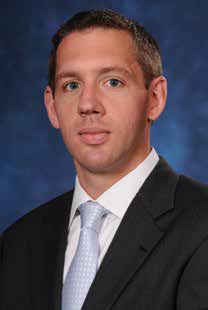The last several years have seen the emergence of Workforce-as-a-Service, or WaaS, an acronym that could soon become as familiar as SaaS (Software-asa- Service, otherwise known as the Cloud), IaaS (Infrastructure-as-a-Service), and other internet-enabled services. Leveraging a growing pool of talent largely fed by unemployment and under-employment, driven in no small part by the ongoing economic pressures on businesses to manage labor costs, this new service manifests itself in a number of ways in the AV and IT market sectors.
A widely reported 2013 global survey found that temporary workers accounted for an average of 22 percent of the workforce, a figure that continues to grow. Workforce 2020, a 2014 international study commissioned by enterprise software company SAP in collaboration with Oxford Economics, discovered that 83 percent of the surveyed executives planned to increase their use of contingent (workers without a permanent contract), intermittent, or consultant workers in response to rapidly changing business demands and to accommodate resource gaps.

Tim Riek, senior vice president, service operations at AVI-SPL. Tim Riek, senior vice president, service operations at AVI-SPL, has observed this trend firsthand. “We’re finding that customers are looking for ways to partner with service providers like AVI-SPL to find ways to be more efficient by using some combination of cloud-leveraged resources, cloud-dedicated resources, and on-site staffing resources, to come up with a comprehensive approach to how they deal with their collaboration environment,” he said.
“We really focus on three primary elements: maintenance services, video managed services, and on-site staffing. We look at those three elements and work with customers to understand what problems they’re trying to solve, and figure out what combination of those three elements would best suit their needs.”
Enterprises worldwide are facing similar budgetary constraints, said Riek. “They’ve got endusers demanding a premium service, and they’ve got budgets that aren’t allowing for it.”
AVI-SPL can geographically tailor its approach for clients, he elaborated. “We’re able to put employees at critical locations.” At less critical locations, “We’re either able to establish dispatch service with local agreements, or time and material agreements that help cover or complement those sites that have on-site staffing. That focuses the majority of their budget toward those locations that are most critical to them, but they don’t leave any locations uncovered.”
AVI-SPL brings those employees on-staff, added Riek. “By bringing these staff on in-house we establish a career path for them,” beyond the opportunities available at the specific locations, he said.

Diego Lomanto, VP of marketing, Work Market The economic crash of 2008 undoubtedly led large numbers of people in the U.S.—voluntarily or otherwise—to join the legions of freelancers. The U.S. Department of Labor’s Bureau of Labor Statistics last published a comprehensive census in 2005, at which time 10.3 million independent contractors accounted for just over 7 percent of the workforce, with a few million on-call and help agency workers adding to the total contingent labor pool. Between 2009 and 2012, the number of temporary employees reportedly rose by 29 percent.
According to a study released in September 2014, commissioned by the Freelancers Union in partnership with Elance-oDesk, 53 million Americans—about one-third of the workforce—are now freelance. Those workers contribute more than $715 billion to the national economy in freelance earnings, the study found. A 2010 study conducted by software developer Intuit predicted that contingent workers would comprise over 40 percent of the workforce—more than 60 million people—by 2020.
On the other side of the equation, according to a recent report by management consulting, technology services, and outsourcing company Accenture, companies spend $300 billion a year globally on contingent labor. That sum is expected to rise to nearly a trillion dollars during the next 10 years.
As the freelance talent pool has grown, various cloud-based labor marketplace platforms have sprung up to supply on-demand workers, especially in IT, AV, and other technical fields. Work Market, which found early success in the AV vertical when it was founded five years ago, goes a step further than other platforms, according to Diego Lomanto, the company’s VP of marketing. Specifically, Work Market’s platform handles many of the complexities associated with hiring and managing freelancers, such as the paperwork and communications, which can be cumbersome for smaller firms. “We have built an end-to-end workflow for engaging with contractors, so you can make working with contractors a core component of your business model,” he said.
“The majority of the business is tech in general, especially installation and maintenance,” continued Lomanto, noting that some of Work Market’s clients are big players in the AV industry. “They need coverage across multiple regions, or there are a lot of smaller, short-term assignments where it doesn’t make sense to staff full-time employees. They’re very interested in using contractors, but they’ve found it complex to manage and not scaling well. A lot of times the contractors that sign up are actually smaller companies that are the preferred vendors for larger AV companies.”

A widely reported 2013 global survey found that temporary workers accounted for an average of 22 percent of the workforce, a figure that continues to grow. Clients can set specific benchmarks—skill set, certifications, and so on—and any contractors meeting those requirements can join the talent pool. “Companies can route work to anyone they’ve accepted, cutting down the time to find people tremendously. Most of the jobs on Work Market are picked up within minutes. Most jobs are three hours in duration; they get picked up fast and completed quickly.”
But what about talent at the executive level? At the turn of the millennium it was possible to “rent a CIO.” While there are companies—WaaS platforms, indeed—that still offer such services, Jon Young, senior consultant with Vantage Technology Consulting Group, believes they are not necessarily offering what he considers a CIO, somebody who provides strategic leadership as an effective part of the business. “What they’re doing is help run the ITE [information technology equipment], the infrastructure. That’s a very different function.”
Young had experience previous to Vantage as a temporary CIO as part of turnaround operations. “But that’s on a short-term basis as you put an environment back together.” For long-term strategic leadership, he said, “I don’t see that as something that is often successfully outsourced or available on a parttime basis, simply because of the integration it needs within the organization.”
One growth trend he has observed, however, is the position of on-demand chief information security officer, or CISO. “We’re seeing that increasingly as a part-time role for small institutions that don’t have the budget to do it themselves. They can partner with peer organizations that might have similar needs; they can have a single policy that’s effective across a number of organizations. It’s a very hard thing to do, but we’re seeing some traction with that.”

Jon Young, senior consultant with Vantage Technology Consulting Group. Smaller enterprises may turn to consultants to fulfill some aspects of the CIO’s role. “Maybe they just have some line staff who need some part-time direction because the business isn’t big enough to support that full-time role around whatever they’re calling the support of their infrastructure. I think there’s a tremendous need for that—I just don’t call it a CIO role,” Young said.
That’s certainly a role AVISPL can fulfill, said Riek. “If you look beyond services, AVI-SPL does focus on the competencies around design, build, and support in our customers’ environments. We’re helping them understand what’s happening in the space, what new technologies are emerging, and how they can help solve problems. We’re designing that in, then we’re working with them to install or bill out those technologies, then supporting them. It’s a life cycle.”
Steve Harvey (sharvey.prosound@gmail.com) has been west coast editor for Pro Sound News since 2000 and also contributes to TV Technology, Pro Audio Review, and other NewBay titles. He has over 30 years of hands-on experience with a wide range of audio production technologies.
